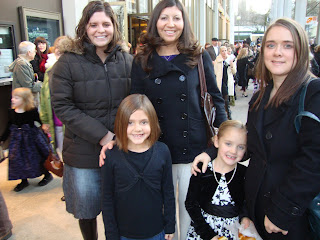Our agenda for day 3 was to visit Pearl Harbor.
Having watched several movies and read many books and articles on the Japanese attack at Pearl Harbor on Dec. 7, 1941 I thought it might be a little anti-climactic to visit the location. It wasn't. Many others who were there that day have written about it and only partially succeeded in describing the feelings of the place. I don't expect to have much success in describing it either. It is a very somber place. I guess you just have to go there to understand the feeling. There are many exhibits at Pearl Harbor. Here are some pictures of some of the more significant ones.
The most significant loss of life occurred on the battleship USS Arizona. She sank in less than 10 minutes and carried over 1,000 sailors down with her.

The Arizona memorial is built above the bridge of the sunken ship. A white buoy marks the bow and stern. Oil still leaks from the hull. There is an odor of diesel fuel at the memorial because of this. The majority of those killed were never recovered so the memorial is their only recognition.

Inside the memorial a wall lists the names of all those who went down with the ship. Only about 1/3 of the names are visible in the photo.

The buoy marking the bow of the Arizona is barely visible in this photo. The war in the Pacific began with the sinking of the USS Arizona. The war ended on the decks of the USS Missouri in Tokyo harbor on Sept. 2, 1945 after the bombings of Hiroshima and Nagasaki. The battleship berthed next to the Arizona and shown in this photo is the USS Missouri.

Besides the USS Arizona there were dozens of other ships, large and small sunk on Dec. 7. This memorial is to the sailors aboard the USS Oklahoma. It is somewhat difficult to see but the white columns each represent an individual. There are hundreds of them.

In addition to memorials honoring those killed on Dec. 7 there are also memorials honoring others who died in WW II. This memorial is to those who perished in the submarine service. The highest mortality rate of all services during WW II was among submariners. Each marble monument in this circle represents a submarine lost in the Pacific. There are about 90 of them. In most cases they were lost with the entire crew aboard.

One of the exhibits is a WW II submarine that survived the war. It is the USS Bowfin.

A self guided audio tour is provided which takes you through the ship and describes much of what life was like in the submarine service.

There were 2 aspects of the submarine that were startling. The first was how complicated a machine it is. This is just one of probably a dozen different areas of the boat that were 'control centers' for various things. The submarine is a mechanical marvel. It is amazing that they worked!

The second startling fact was how cramped it was. About 15 men slept in this space. You can see almost half the space in the photo. There were fewer bunks than men. Since the boat ran 24-7 never more than half the men were sleeping at any one time so there were only bunks for about half the number of the crew. Everywhere in the boat you could easily see how men would literally be crawling over one another all the time. It was difficult duty to say the least.

I was surprised at how much of the submarines fighting occurred on the surface. About half the ships sunk by this submarine were sunk by surface gunning without use of torpedoes. Somehow I forgot to take a picture in the torpedo room!

When all was done, it was a very interesting and sobering day. Unfortunately WW II didn't end fighting. It seems like freedom is something that requires a constant vigil to maintain and a willingness to make enormous sacrifices to enjoy.





















































